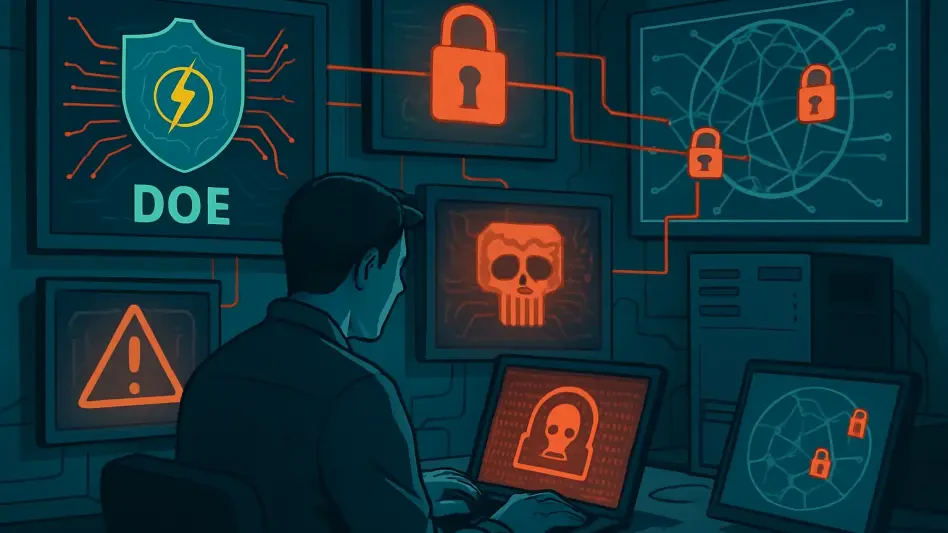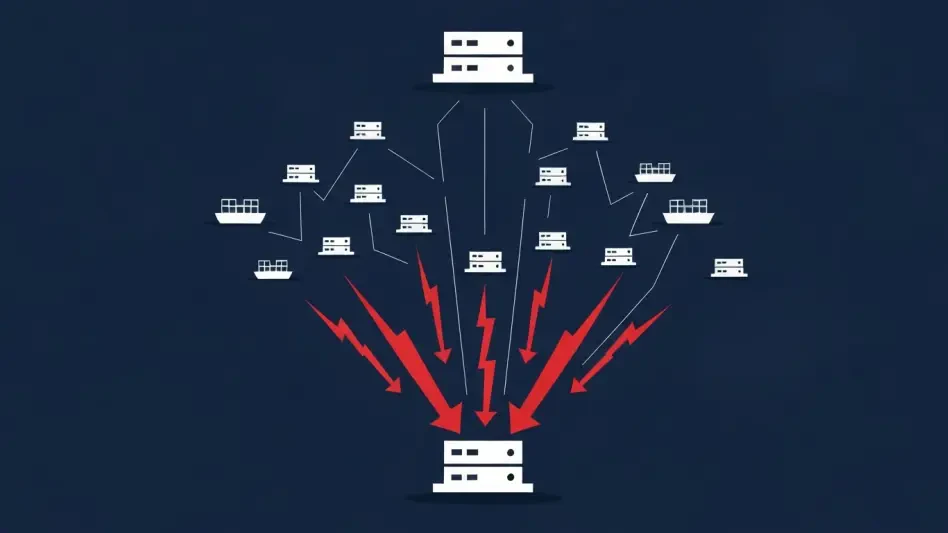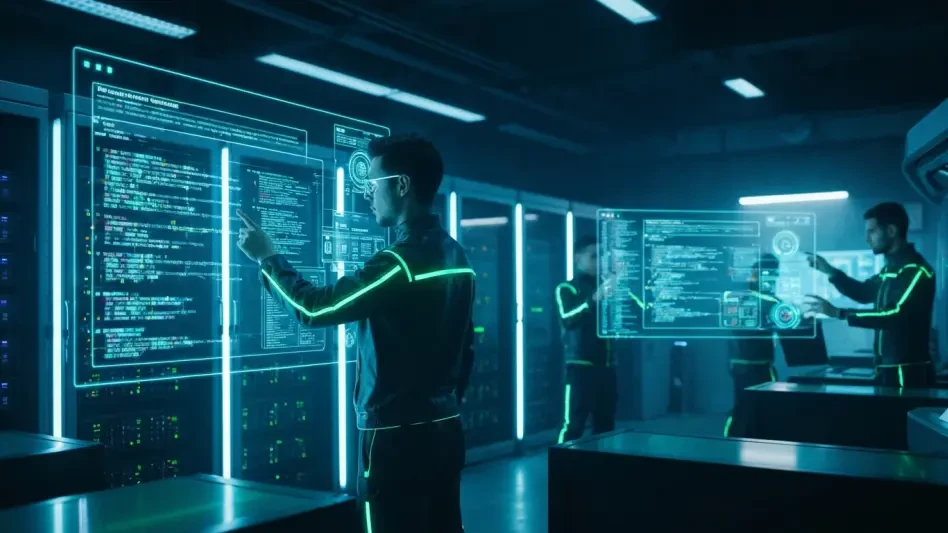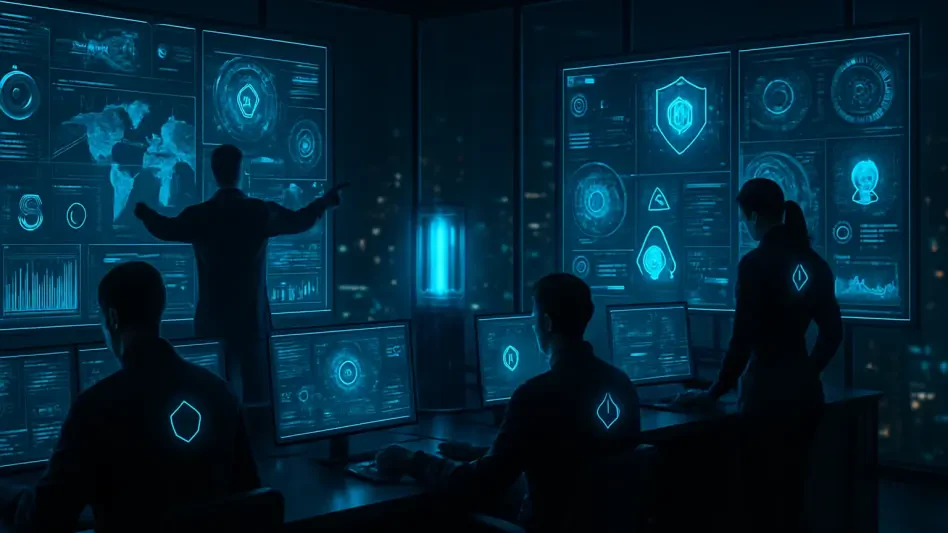Imagine a sprawling federal agency tasked with safeguarding some of the nation’s most critical infrastructure, yet grappling with persistent vulnerabilities that could expose sensitive data to cyber threats. This is the reality for the Department of Energy (DOE), as revealed by a recent evaluation of its unclassified cybersecurity program, which uncovers significant lapses in adhering to the National Institute of Standards and Technology (NIST) Cybersecurity Framework (Version 1.1), spanning all five core functions: Identify, Protect, Detect, Respond, and Recover.
These shortcomings are not merely technical oversights but systemic issues that hinder the protection of unclassified systems and data. A backlog of unresolved recommendations and delays in addressing known weaknesses paint a troubling picture of an agency struggling to keep pace with evolving cyber risks. This raises pressing questions about the root causes of these delays and the potential consequences for national security if vulnerabilities remain unaddressed.
The scope of the challenge is vast, affecting multiple DOE sites and programs, including those tied to the National Nuclear Security Administration (NNSA). How can such an essential agency ensure the integrity of its systems when fundamental cybersecurity practices are inconsistently applied? The answers lie in understanding the depth of these issues and the urgency required to mitigate them.
Background and Importance of Cybersecurity in DOE Operations
The DOE plays a pivotal role in managing critical infrastructure, from energy grids to nuclear security through entities like the NNSA. Protecting unclassified systems within this framework is not just a technical necessity but a cornerstone of operational reliability. These systems, while not classified, often contain sensitive information that, if compromised, could disrupt essential services or erode public trust.
Adherence to the NIST Cybersecurity Framework is a federal benchmark for best practices, providing a structured approach to managing cyber risks. For an agency like the DOE, alignment with this standard is crucial to safeguard data against increasingly sophisticated threats. The framework’s comprehensive guidelines help ensure that risks are identified, systems are protected, and recovery mechanisms are in place, forming a vital defense against potential breaches.
Beyond internal operations, the implications of cybersecurity failures at the DOE extend to national security and public confidence in government institutions. A breach could have cascading effects, impacting energy supply chains or revealing proprietary information. Thus, addressing these challenges is not only about compliance but about preserving the agency’s ability to fulfill its mission in a secure environment.
Research Methodology, Findings, and Implications
Methodology
The evaluation of the DOE’s cybersecurity program involved a rigorous process of audits, testing, and analysis to assess compliance with NIST Special Publication 800-53 controls. Conducted across various DOE sites and programs, the scope focused exclusively on unclassified systems, drawing from both current assessments and historical audit data to provide a comprehensive view of the agency’s cybersecurity posture.
This approach included detailed examinations of security controls, vulnerability management processes, and policy implementation. By testing systems at multiple locations, the assessment aimed to capture a representative sample of the DOE’s decentralized structure, ensuring that findings reflected both common challenges and site-specific issues. The methodology prioritized measurable outcomes to gauge progress against federal standards.
Additionally, the process incorporated a review of prior recommendations to track remediation efforts over time. This historical context allowed for an understanding of recurring problems and the effectiveness of past corrective actions, providing a benchmark for evaluating current performance against long-standing goals.
Findings
The evaluation revealed a staggering 120 open recommendations, comprising 44 unresolved prior issues and 76 newly identified ones as of the latest fiscal year. This significant backlog underscores systemic delays in addressing cybersecurity weaknesses, leaving critical gaps in the DOE’s defenses. The persistence of these issues suggests challenges in prioritization and resource allocation for timely remediation.
Deficiencies were evident across all five NIST framework functions, with notable problems in risk management under the Identify function, where asset tracking and governance remain inconsistent. Similarly, vulnerability management within the Protect function showed lapses in configuration controls, while emerging concerns in identity and access management highlighted inadequate oversight of privileged accounts. Gaps in incident response and recovery planning further compounded the risks.
Despite these challenges, some progress was noted in specific areas like risk management and configuration settings, where a handful of prior recommendations were closed. However, the emergence of new issues, particularly in access controls, indicates that improvements in one domain often reveal vulnerabilities elsewhere, creating a cycle of ongoing concern that demands constant vigilance.
Implications
Unresolved cybersecurity weaknesses pose serious risks, including potential data breaches and system compromises that could disrupt DOE operations. Such incidents might not only affect internal functions but also have broader repercussions for energy infrastructure and national security, given the agency’s critical role in these sectors. The stakes are high for maintaining system integrity.
These findings also reflect on federal cybersecurity priorities, highlighting the difficulty of securing large, decentralized organizations against rapidly evolving threats. The DOE’s struggles mirror challenges faced by other government entities, pointing to a need for systemic reforms in how cybersecurity is managed across public agencies. Alignment with NIST standards remains a pressing goal.
Accelerated corrective actions are essential to mitigate these risks and ensure compliance with best practices. Without prompt intervention, the DOE remains vulnerable to exploitation by malicious actors, emphasizing the importance of strategic planning and execution to close existing gaps and prevent future lapses in security protocols.
Reflection and Future Directions
Reflection
Evaluating the DOE’s cybersecurity program revealed operational hurdles, including the refusal of certain sites to permit follow-up testing, which limited the ability to verify remediation efforts. This resistance points to inconsistencies in commitment across the agency’s decentralized structure, complicating efforts to achieve uniform progress in addressing identified weaknesses.
Balancing progress with persistent risks remains a central theme, as some recommendations were successfully closed in domains like risk management. However, systemic governance issues and uneven operational execution continue to undermine overall effectiveness, suggesting that deeper structural challenges must be tackled to sustain improvements over time.
Limitations in the evaluation, such as its exclusive focus on unclassified systems, also warrant consideration. While this scope provides valuable insights, it leaves questions about the security of classified environments unanswered, indicating a potential area for expanded analysis to capture a fuller picture of the DOE’s cybersecurity landscape.
Future Directions
Further research should delve into the underlying causes of remediation delays, examining whether resource constraints, bureaucratic inertia, or other factors are primary contributors. Understanding these barriers could inform more effective strategies to expedite corrective actions and reduce the backlog of unresolved recommendations within the DOE’s framework.
Investigating enhancements in supply chain risk management and recovery planning offers another promising avenue. Given identified gaps in these areas, targeted studies could yield actionable recommendations for strengthening third-party oversight and ensuring robust contingency measures to minimize downtime after incidents.
Exploring optimized resource allocation and prioritization mechanisms is also critical. Assessing how the DOE can better distribute efforts to address both existing vulnerabilities and prevent new ones will be key to building a resilient cybersecurity posture, ensuring that limited resources achieve maximum impact in safeguarding systems.
Conclusion: Urgency and Path Forward for DOE Cybersecurity
The evaluation of the DOE’s unclassified cybersecurity program uncovered systemic shortcomings that spanned all NIST framework functions, with a daunting tally of 120 unresolved recommendations standing as a stark reminder of the work ahead. These persistent vulnerabilities exposed critical risks to data and systems, demanding immediate attention to prevent potential breaches or disruptions.
Looking back, the assessment highlighted the complexity of securing a decentralized agency against dynamic cyber threats, yet it also pointed to pockets of progress that offered hope for improvement. The challenge was not merely in identifying issues but in executing timely solutions across diverse sites and programs with varying levels of readiness.
Moving forward, the DOE needs to adopt a proactive stance, establishing stronger governance structures to streamline remediation efforts and ensure accountability. Enhanced collaboration across sites, coupled with strategic investments in vulnerability management and policy enforcement, emerges as vital steps to fortify defenses. Ultimately, sustained commitment to aligning with federal cybersecurity standards is essential to protect unclassified systems and uphold the agency’s critical mission in an era of escalating digital risks.








